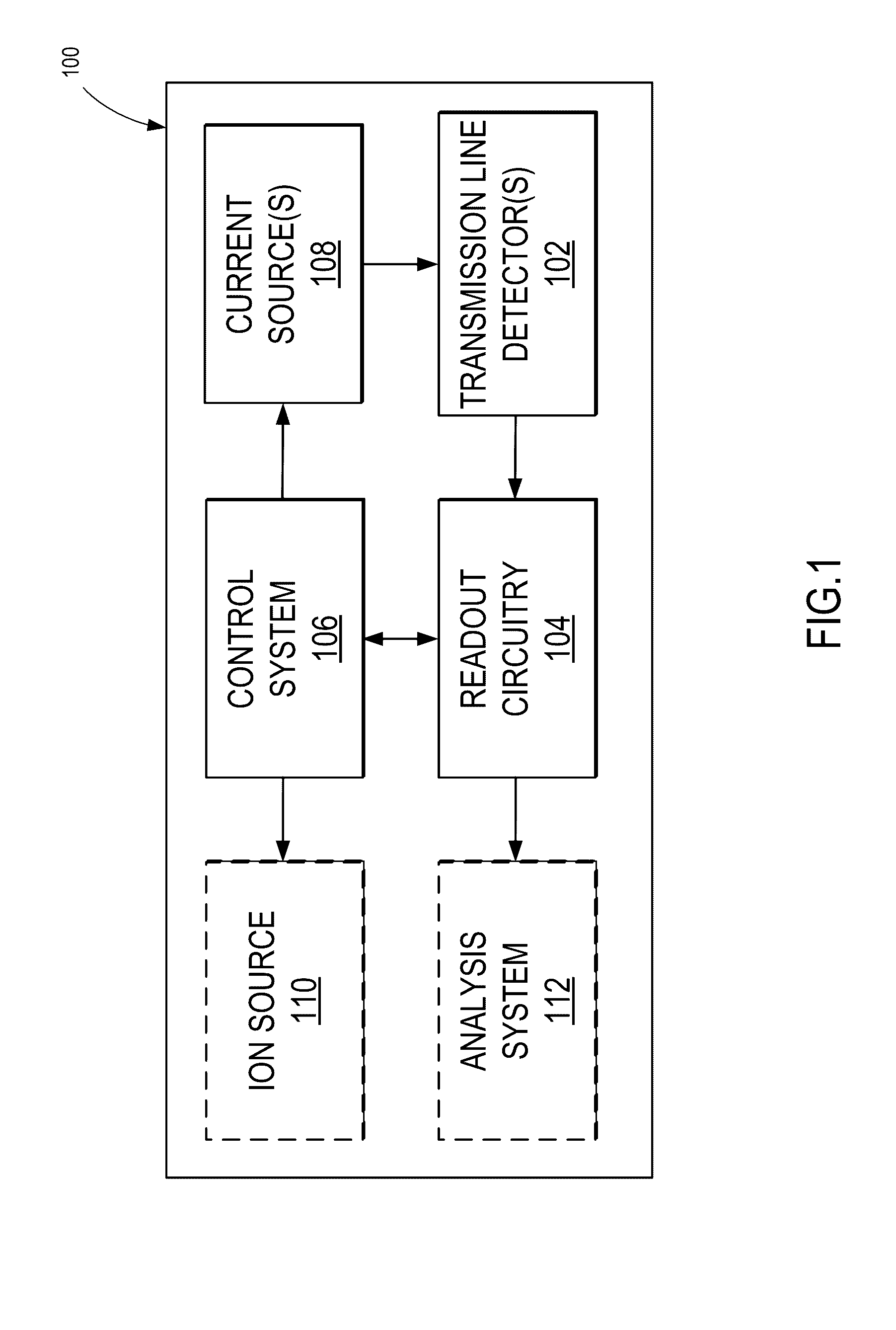System and method for characterizing ions using a superconducting transmission line detector
a transmission line detector and superconducting technology, applied in the field of particle detection, can solve the problems of maximum event rate, high detection efficiency, kinetic energy resolution, etc., and achieve the effect of extending the detection area, high efficiency and sensitivity, and not excessively long recovery tim
- Summary
- Abstract
- Description
- Claims
- Application Information
AI Technical Summary
Benefits of technology
Problems solved by technology
Method used
Image
Examples
Embodiment Construction
[0022]The present disclosure describes an approach for detecting and characterizing incident ions, using detectors capable of providing positional information and kinetic energy discrimination that overcomes deficiencies of previous technologies. In some aspects, novel superconducting delay line detectors are provided, which utilize substantially extended superconducting transmission lines for detecting ion impact events, in contrast to previously utilized superconducting high-kinetic-inductance nanowires or normal conducting delay lines. As will be appreciated from descriptions below, among other advantages, such superconducting delay line detectors make it possible to scale to any desired active area, and achieve position resolution. For instance, due to the fact that transmission lines have a real, frequency independent impedance, which is determined by the inductance and capacitance per unit length, the dead time of the detector no longer scales with the length. Furthermore, whe...
PUM
 Login to View More
Login to View More Abstract
Description
Claims
Application Information
 Login to View More
Login to View More - R&D
- Intellectual Property
- Life Sciences
- Materials
- Tech Scout
- Unparalleled Data Quality
- Higher Quality Content
- 60% Fewer Hallucinations
Browse by: Latest US Patents, China's latest patents, Technical Efficacy Thesaurus, Application Domain, Technology Topic, Popular Technical Reports.
© 2025 PatSnap. All rights reserved.Legal|Privacy policy|Modern Slavery Act Transparency Statement|Sitemap|About US| Contact US: help@patsnap.com



